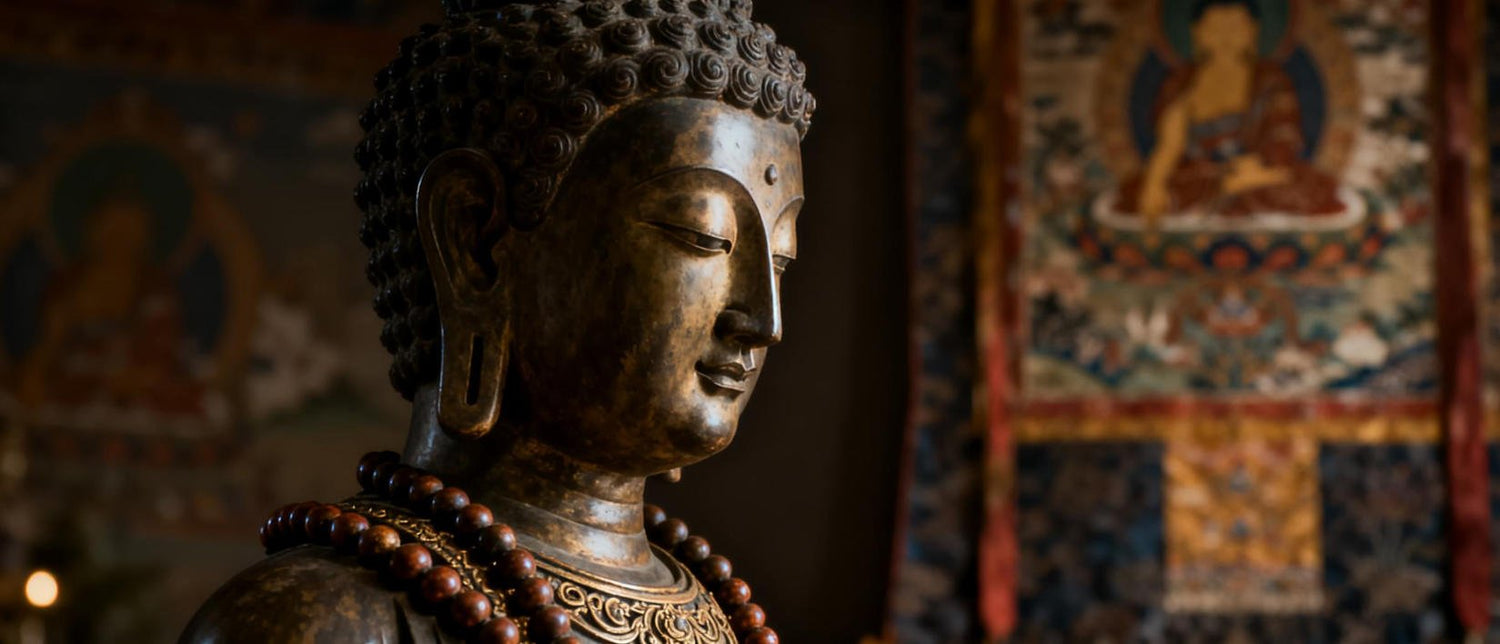
Mala Beads vs. Prayer Beads: Understanding the Sacred Connection
In a Tibetan monastery, a monk's fingers move rhythmically over 108 beads. In a European cathedral, a worshipper whispers prayers while counting glass pearls. Separated by continents and centuries, these practices share a profound secret: the human spirit finds comfort and connection in the tactile rhythm of sacred beads. While we specialize in the Buddhist mala tradition, understanding this global tapestry of prayer beads deepens our appreciation for the universal human yearning for the divine.
The Common Thread: Why Beads?
Across faiths and cultures, prayer beads serve remarkably similar purposes. They are, at their essence, spiritual technology designed to solve common human challenges in meditation and prayer:
-
Focus for the Wandering Mind: The simple, repetitive act of moving beads gives the restless mind a physical anchor, preventing distraction during spiritual practice.
-
Rhythm for Recitation: Beads provide structure for repetitive prayers or mantras, creating a meditative rhythm that can induce deeper states of consciousness.
-
Tactile Connection: The physical sensation of beads under fingertips creates a mind-body connection, making abstract prayer or meditation more grounded and present.
-
Sacred Counting: They serve as a reliable counter for prayers, mantras, or breaths, freeing the mind from keeping track numerically.
A World of Sacred Beads: A Comparative Glance
1. Buddhist Mala Beads (108 Beads)
-
Purpose & Practice: Used for counting mantras, breaths, or prostrations in meditation. The practitioner typically holds the mala in the right hand, using the thumb to pull beads toward themselves, moving from one bead to the next with each repetition. The 109th "guru bead" is never crossed; it marks the completion of a round and the beginning of a new one.
-
Symbolism: The 108 beads represent the 108 human passions or defilements to overcome, among other sacred meanings. Materials like bodhi seed, sandalwood, or gemstones are chosen for their specific energetic properties.
-
The Vibe: Contemplative, introspective, focused on internal transformation and mindful awareness.
2. Catholic Rosary (59 Beads)
-
Purpose & Practice: Used to recite a specific sequence of prayers, including the Apostles' Creed, Our Father, Hail Mary, and Glory Be. The prayers are grouped into "decades" (sets of 10), each dedicated to contemplating an event (Mystery) in the lives of Jesus and Mary.
-
Symbolism: The circular shape represents the eternity of God, the crucifix the sacrifice of Christ, and the beads themselves the roses (a traditional gift to the Virgin Mary).
-
The Vibe: Devotional, narrative, focused on connecting with the divine through the story of salvation and the intercession of saints.
3. Islamic Misbaha/Tasbih (99 or 33 Beads)
-
Purpose & Practice: Used for dhikr—the remembrance of God—by repeating the 99 Names of Allah or other phrases praising God. Often used after formal prayers.
-
Symbolism: The 99 beads correspond to the 99 Names of Allah in the Quran. A 33-bead version is used in cycles of three.
-
The Vibe: Reverent, rhythmic, focused on the glorification and attributes of the Divine.
4. Hindu Japa Mala (108 Beads)
-
Purpose & Practice: Nearly identical to Buddhist malas, used for japa—the repetitive chanting of a deity's name or a mantra to cultivate spiritual awareness.
-
Symbolism: The 108 beads have similar significance to Buddhist tradition. The guru bead (meru) represents the ultimate reality that one cannot cross over.
-
The Vibe: Devotional, mantra-based, aimed at self-realization and union with the divine.
The Buddhabelief Perspective: Honoring a Specific Lineage
While we celebrate these global traditions, the malas we create are deeply rooted in Tibetan Buddhist practice. Each Buddhabelief mala is not just an object for counting, but a sacred tool crafted with intention. The choice of material—be it grounding yak bone, calming sandalwood, or clarifying amethyst—is integral to its purpose. Furthermore, our malas are blessed by Tibetan monks, completing their journey from physical object to spiritually imbued companion for your practice.
This blessing is what transforms a string of beads from a beautiful accessory into a consecrated tool, carrying the vibration of centuries of spiritual practice.
A Universal Language of the Soul
Holding a mala, a rosary, or a misbaha, one feels the same human impulse: to reach for the sacred through the simplicity of touch and repetition. These traditions remind us that despite different paths, the human heart speaks a common language in its search for meaning, comfort, and connection. In a world of digital distraction, the ancient, physical rhythm of prayer beads remains a profoundly relevant technology for the soul.
FAQs: Sacred Beads Across Traditions
Q: Can I use a Buddhist mala for Christian or other prayers?
A: While a mala is designed for Buddhist practice, the tool itself can be adapted. The most respectful approach is to understand its original purpose. Many interfaith practitioners use malas for centering prayer or repeating sacred phrases from their own tradition, focusing on the universal human act of contemplative repetition.
Q: Why are there 108 beads in a mala?
A: The number 108 is profoundly significant in Dharmic traditions. In addition to the 108 human passions, it appears in mathematics (1 to the 1st power x 2 to the 2nd power x 3 to the 3rd power = 108), astronomy, and other sacred geometries. It is considered a number of wholeness and completion.
Q: What's the most important thing about using any prayer beads?
A: Sincere intention. Regardless of the tradition, the power of the practice comes not from the beads themselves, but from the heart and mind of the person using them. The beads are a guide, but the journey is yours.





